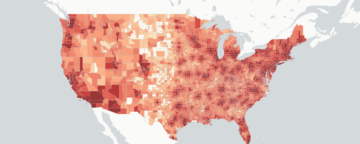Vaccines are safe and effective, and help reduce death and illness. But global vaccination rates are suboptimal and have trended downward, leaving humanity more vulnerable to vaccine-preventable diseases such as Covid-19, influenza, measles, polio, and HPV or human papillomavirus.
Identifying interventions that could increase vaccine coverage could help save lives. A new paper from a team led by researchers at the University of Pennsylvania offers the first comprehensive meta-analysis examining what types of vaccination intervention strategies have the greatest effect, and whether different intervention strategies work better in different countries.

“A systematic review and meta-analysis of strategies to promote vaccination uptake,” published today in Nature Human Behaviour, analyzes the results of 88 eligible randomized-controlled trials testing interventions with 1,628,768 participants from 17 countries. Previous meta-analyses have been more limited to specific vaccines, specific intervention strategies, or specific populations, and therefore have been unable to compare strategies or consider their relative effectiveness across regions.
“Figuring out which approaches help increase immunization, and under what circumstances, could help global public health leaders allocate resources more efficiently and ultimately improve health outcomes,” said co-author Dolores Albarracín, the Amy Gutmann Penn Integrates Knowledge University Professor at the University of Pennsylvania and director of the Communication Science division at the university’s Annenberg Public Policy Center (APPC).
The researchers considered seven types of vaccine intervention strategies: increasing access to vaccination, sending vaccination reminders, providing incentives (e.g., money), supplying information, correcting misinformation, promoting active and passive motivation, and teaching behavioral skills.
Vaccination intervention strategies that work
The researchers found that interventions were associated with an estimated 50 percent higher chance of vaccination than “control” conditions with no intervention. They also found that two interventions were most promising in improving vaccination uptake. There was a moderate effect of interventions to increase access to vaccines, particularly in countries with low access to vaccines and quality of health care. The research found a small effect from incentives, and non-significant effects from the other interventions examined. For example, informational and misinformation-correction interventions had no detectable effects on vaccination rates.
Interventions to increase access to vaccines included offering transportation assistance or bringing vaccines to recipients at sites like nursing homes, family homes, and workplaces. These strategies actually tripled the odds of vaccination and had even larger effects in lower-income countries with fewer resources and limited access to health care.
The financial incentive interventions included, for example, a U.S. study that achieved an 85% influenza vaccination rate when physicians were reimbursed $1.60 per dose, compared with a 70% vaccination rate when they were reimbursed $0.80 per dose. However, both in this U.S. study and the estimates from the meta-analysis, the effects of incentives were quite small.
“Public health officials often say that ensuring vaccine access is the first step to promoting immunization,” Albarracín said. “Our meta-analysis provides hard evidence in support of this recommendation and indicates that this should be a special priority in under-resourced areas with limited access to health care. By contrast, even though misinformation undermines democracy and can be far-fetched, and thus highly salient, correcting it does not ensure health behaviors like vaccination.”
The authors note that there are several important barriers to increasing access in underserved areas, but it is important to understand how crucial this form of intervention is.
“A systematic review and meta-analysis of strategies to promote vaccination uptake” was published Aug. 1, 2024, in Nature Human Behaviour. In addition to Albarracín, the authors are Sicong Liu, formerly a postdoctoral researcher in Albarracín’s Social Action Lab at Penn and now a professor at the South China Normal University, Guangzhou, China; Marta Durantini, clinical research director of the Communication Science division at APPC; Christopher Calabrese, a former postdoctoral fellow at APPC and now an assistant professor at Clemson University; and Flor Sanchez, professor at the Universidad Autónoma de Madrid.


